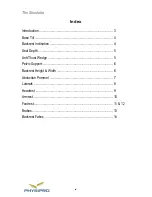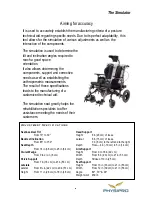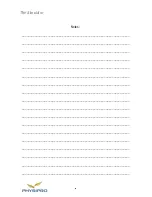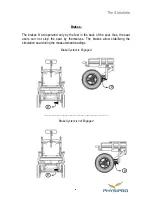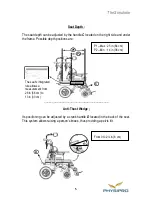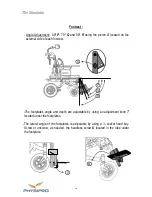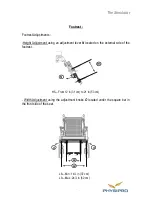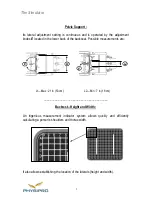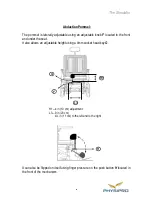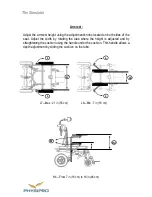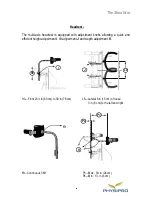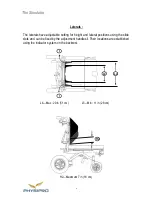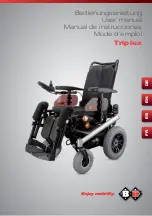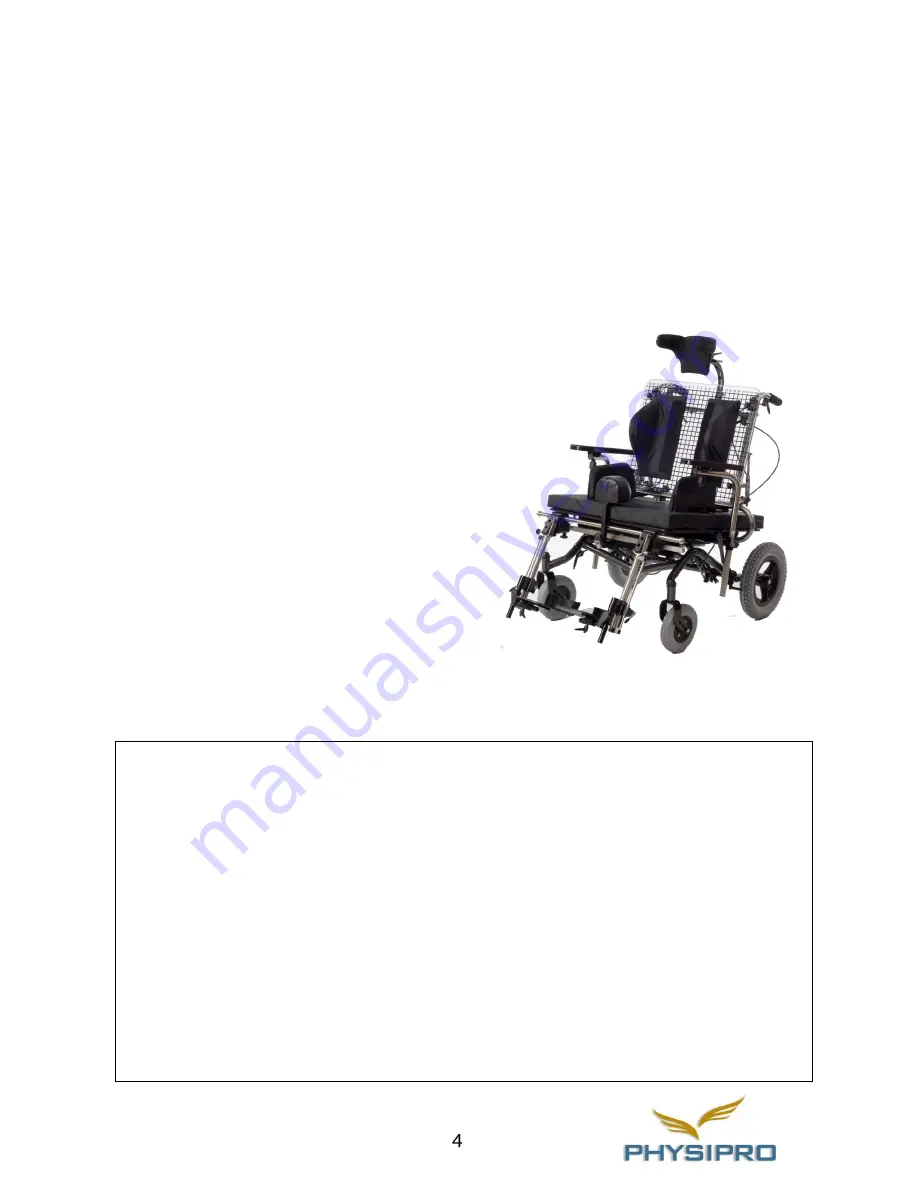
It is used to accurately establish the manufacturing criteria of a posture
technical aid regarding specific needs. Due to its perfect adaptability, this
tool allows for the simulation of various adjustments as well as the
interaction of the components.
The Simulator
A
D J U S T M E N T
S
P E C I F I C A T I O N S
Seat-backrest Tilt
From 10° to 30°
Backrest Inclination
From 85° to 150°
Seat Depth
From 14 in (36 cm) to 25 in (64 cm)
Crural Wedge
From 0 to 2½ in (6 cm)
Pelvic Support
From 7 in (18 cm) to 21 in (53 cm)
Laterals
Lateral
From 8½ in (22 cm) to 20 in (51 cm)
Height
From 11 in (28 cm) to 18 in (46 cm)
Head Support
Height
8 in (20 cm) of loose
Lateral
6 in (15 cm) of loose
3 in (8 cm) to the left and to the right
Depth
From—4 in (-10 cm) to 5 in (14 cm)
Arm Support
Height
From 0 to 16 in (40 cm)
Width
From 8 in (20 cm) to 21 in (53 cm)
Depth
Stroke of 10 in (25 cm)
Feet Support
Height
From 13 in (33 cm) to 21 in (53 cm)
Width
From 12 in (30 cm) to 21 in (53 cm)
Angle
60
°
, 70
°
& 90
°
Weight Limit 450 lb
Aiming for accuracy
The simulation is used to determine the
tilt and inclination angles required to
reach a good space
orientation.
It also allows determining the
components, support and corrective
needs as well as establishing the
anthropometric measurements.
The result of these specifications
leads to the manufacturing of a
customized technical aid.
The simulation seat greatly helps the
rehabilitation specialists to offer
assistance meeting the needs of their
customers.


